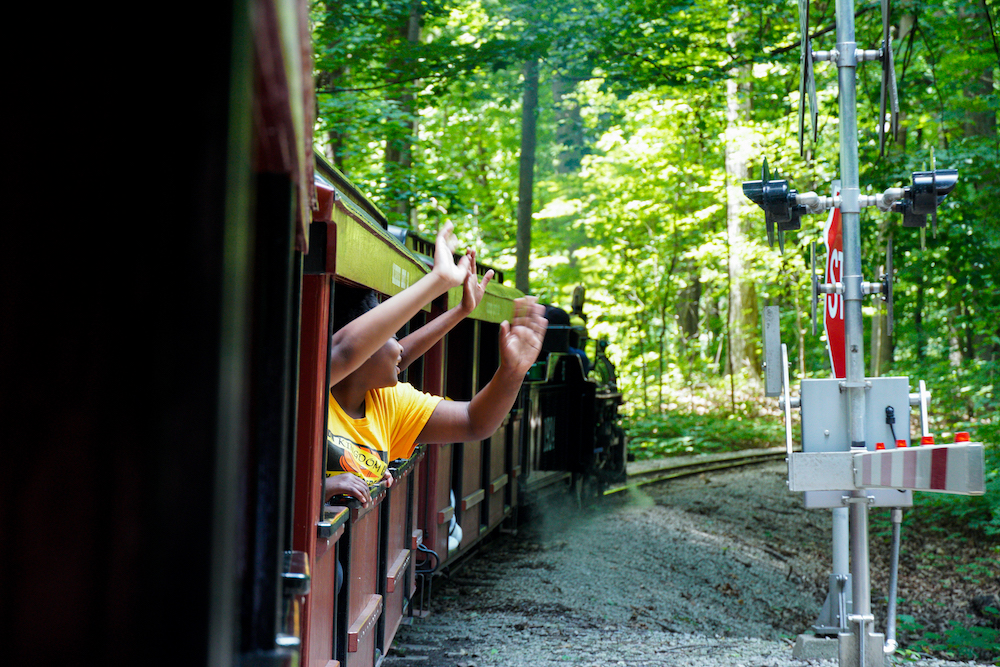
Despite its small size, grand scale railroading – well-known for miniature train rides at parks – can be full of uniqueness, character, and history that is as big as the 1:1 scale. The Milwaukee County Zoo’s North Shore Bank Safari Train is a grand example of this as I’ve come to learn of this 15-inch gauge railroad’s past, present and future during a July 19, 2024, visit.
The past
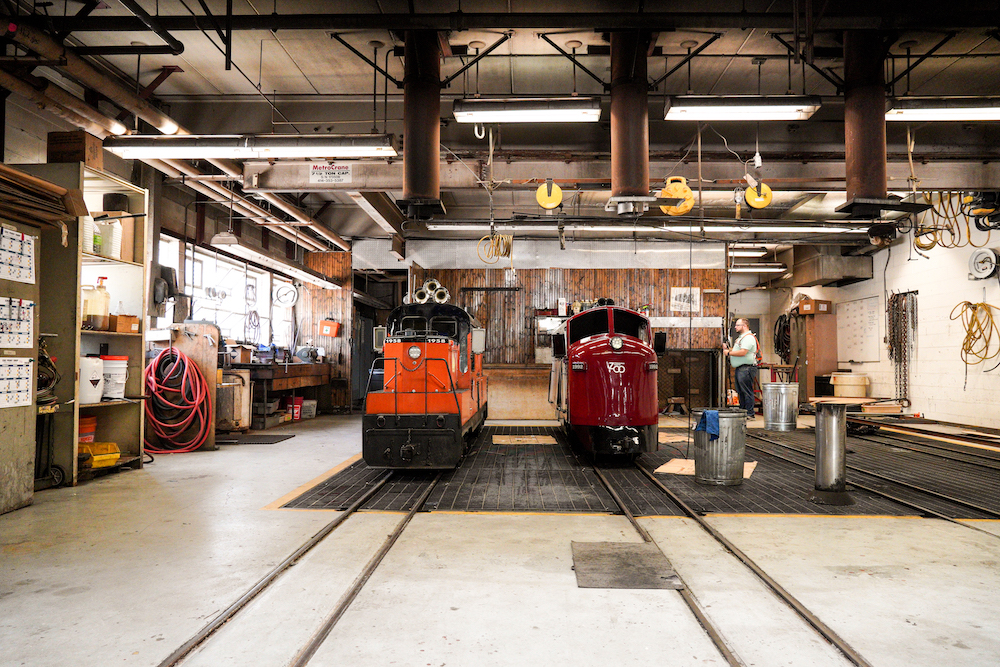
When initially arriving at the zoo, the first stop for myself and Trains.com Video Producer Ben Lake was the railroad’s shop complex for a private tour. This, of course, is where the fleet of locomotives and 20 passenger cars are maintained, repaired, and rebuilt. It was also where the history of this round-the-clock operation was brought to the forefront.
When it was decided to relocate the Milwaukee County Zoo from the downtown’s Washington Park in the 1950s, the county park looked to raise public interest for their acquired 190-acre site in West Allis. The answer became a railroad small enough to make the loop yet big enough for passengers to ride in. Support from what was then the Milwaukee Journal helped lay the 15-inch gauge track, beginning in 1955, transforming this fledgling rail line into the first major asset built on the new property.
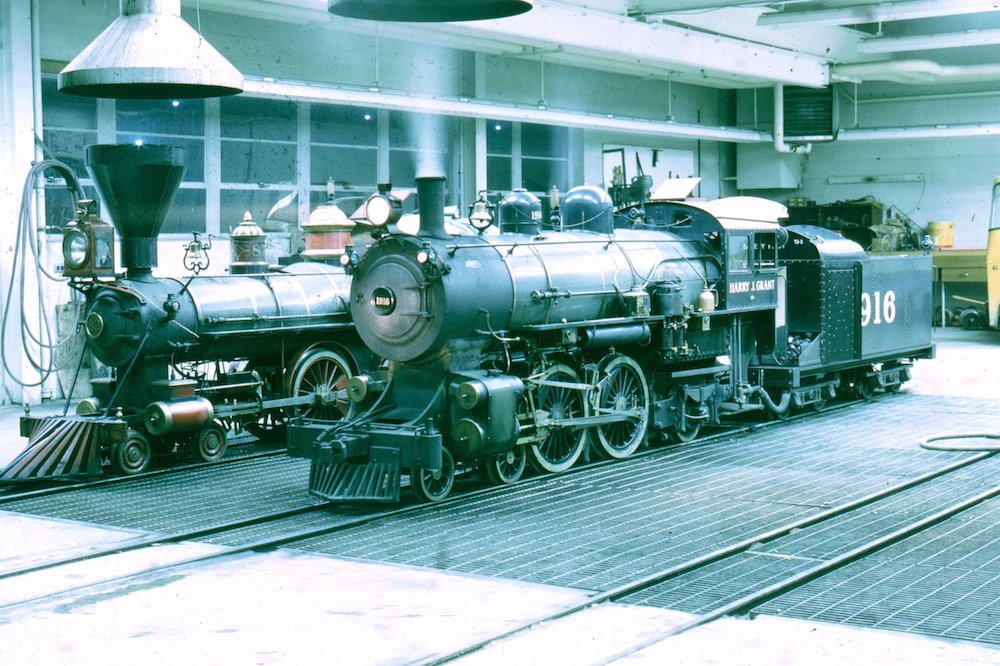
Starting operations in 1958, the railroad was initially a public relations tool to preview and promote the zoo’s new location to passengers during its relocation and construction. Whether or not it was always meant to be a temporary setup has never been confirmed. “Once the zoo opened [in 1961], they already had the railroad, and owned and operated it,” said Calvin Schickel, rides and attractions lead.
“So, it was easy to keep going,” he added. “We’ve reinvested in it every year since 1955, and it’s by far one of the most popular attractions in this park.”
The present
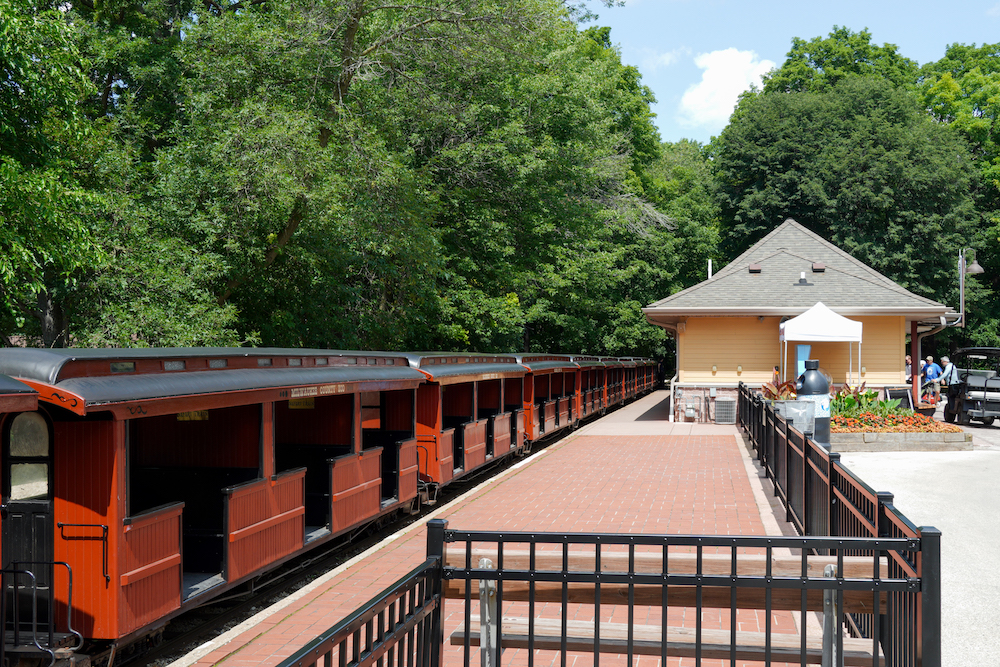
From the shops, we returned to the public area just in time to document 4-6-2 steam locomotive No. 1924 Irwin Maier pulling into the passenger depot. The Sandley-built Pacific initially rolled out of the Wisconsin Dells shops in 1978 for heavy-duty work at the zoo. Of course, it was only fitting for Ben and me to go for a ride. The 10-car Safari Train of wooden coaches seemed like a cakewalk for No. 1924 as it departed smartly for our run around the campus.
Traveling counterclockwise, the train cuts through a park-like atmosphere of deep woods and forest. A scenic highlight appears to the left side as the line skirts along a quarter of the Lake Evinrude shores before eventually returning to the station. The trip covers the 1.25-mile loop in roughly 8 minutes. To me, it’s the perfect duration for families to enjoy the trip while continuing to meet the daily passenger demand for the railroad.
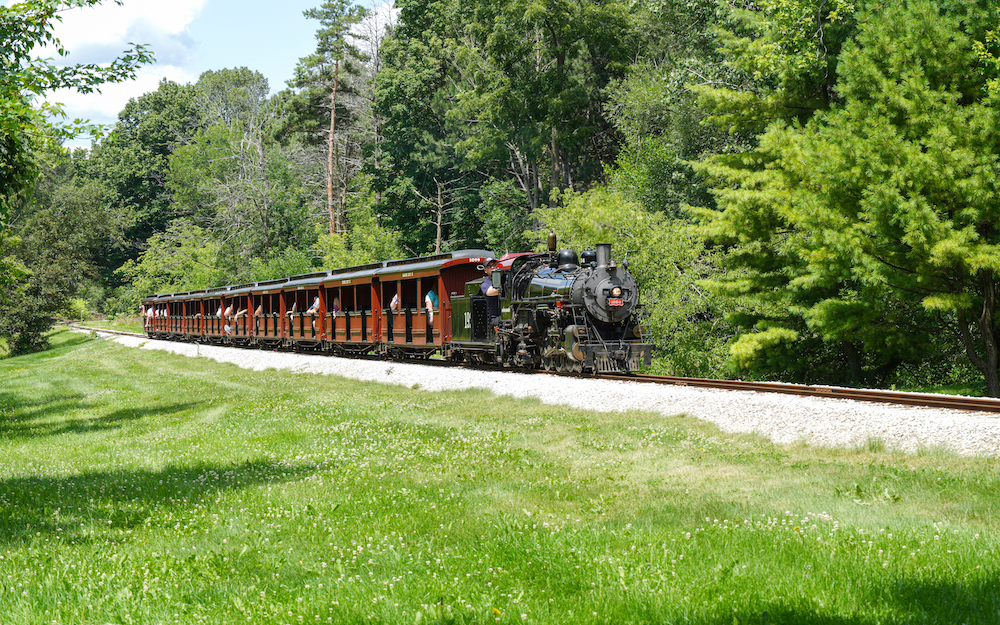
The demand itself shows the Safari Train’s sustainable relevancy and popularity among the zoo’s guests. Perhaps a good problem to have, this sustainability has Schickel addressing the major challenge of having the railroad and equipment always ready and in quality condition.
“Most of these cars are 60 years old with parts you won’t find on a shelf,” he said. “We make our own parts and know people that can help us make parts, and just make sure we get everything going.”
The future
During the trip, nostalgia filled the first half of the journey for me as I was taken back to my childhood of past rides behind the likes of Nos. 1924 and 4-4-2 1916 Henry J. Grant (operating today at the Dells’ Riverside & Great Northern Railway after a 63-year residency at the zoo). The other half was a look toward the railroad’s future.
On March 14, 2024, the sale of the steam locomotives was announced with the Riverside & Great Northern Preservation Society as the new owners. Home to the former Sandley Light Railway Equipment Works, the Sandley-built No. 1916 returned to its birthplace in April. No. 1924 will follow suit in October.
“When it came time to talk about what we can do with the steam locomotives,” Schickel explained, “Riverside [& Great Northern] was interested, and we were happy to get them back to where they came from.”
He continued, “They were built up there, Riverside does a great job at preserving what they have, and we knew they were going to be taken care of. That’s important to us.”

The zoo currently rosters two diesels — the Milwaukee Road-painted No. 1958 was historically one of the first locomotives to arrive on the railroad and today serves as the workhorse. Both it and the F unit-inspired No. 1992 will pitch in regularly as the railroad transitions to all diesel in 2025. Though the operation won’t starve for power as two custom-built units are currently on order, according to Schickel.
“They’re going to be Tier-4 diesels which will help lower carbon emission,” he said. “We also get to do some cool stuff we haven’t been able to do in the past.”
Better tractive effort, two-seated cabs for expanded training and educational cab ride experiences, and ultimately growing the railroad to a year-round operation (currently scheduled March through November) are additional highlights Schickel pointed out from expectations towards the new diesels. Body design and livery are being finalized, with arrivals of said units expected in the coming years.
Arriving back at the station concluded our visit to the Milwaukee County Zoo’s Safari Train, thus offering my thanks to the park for being a fantastic host.
For those looking to make their own future visit, consider these upcoming dates. The 2024 steam schedule with No. 1924 is currently set for Aug. 9-10, 15-18, 23-24, and 30-31 with additional dates in September and October to be announced.
While a bit far off, I also recommend planning a 2028 day out to not only ride, but to also help commemorate the railroad’s 70th “Platinum” year. Though regardless of the day you go, I guarantee a grand time when visiting a staple for both the Milwaukee County Zoo and Milwaukee County.














It was sad that the Zoo and Milwaukee County bought into the nonsense that the steam locomotives somehow caused air pollution and contributed to climate change. Total nonsense. I grew up in Milwaukee and I only wanted to ride the steam locomotive led train. The steam locomotives will be missed and I will not ride behind the diesel led trains. Besides the Zoo has become so expensive. Visited many times as a kid and still remember visiting the old zoo location at Washington Park while new zoo was being built. I am glad that the Steam locomotives will be used and preserved at their new home. Nothing like the smell of burning coal.
Great Article about the Zoo Train!